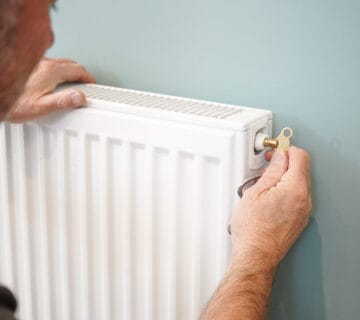How to Lower Your Household Bills in the Winter: A Guide to Saving Money
Winter brings higher energy bills as we try to keep our homes warm and energy efficient. The colder months bring more challenges as energy and utility costs rise, making it more expensive to keep our homes warm and cosy. Thankfully, there are cost-effective ways to help lower your household bills without compromising on comfort. Here’s how you can stay warm and save money this winter.
Insulate your home properly
Insulation is one of the most cost-effective ways to reduce heating bills. A well-insulated home retains heat, meaning your heating system doesn’t need to work as hard.
- Loft Insulation: Up to 25% of heat loss occurs through an uninsulated roof. By installing or upgrading your loft insulation, you can significantly lower your heating costs.
- Wall Insulation: If your home has cavity walls, consider cavity wall insulation to prevent heat loss. For solid walls, external or internal wall insulation might be worth exploring.
- Draught-Proofing: Seal gaps around doors, windows, and even keyholes to prevent cold air from entering and warm air from escaping.
Use smart heating controls
Smart thermostats and heating systems allow you to tailor your heating schedule to your lifestyle.
- Smart Thermostats: These devices learn your schedule and adjust your heating accordingly, so you’re only using energy when you need it. Some models can even be controlled remotely through an app, giving you more flexibility.
- Zoned Heating: Consider a system that lets you control the heating in individual rooms. This way, you can heat only the spaces you use, saving money on unnecessary energy consumption.
Use energy-efficient appliances
Using A-rated energy-efficient appliances can make a difference in the cost it takes to run. When looking to purchase appliances such as fridges and washing machines, it is recommended to buy appliances with an A rating.
- Energy-Efficient Heaters: If you need a boost of warmth, choose energy-efficient space heaters or electric blankets instead of heating the entire house.
- LED Lighting: As daylight hours shorten, lights will be on more often. Switching to energy-saving LED bulbs can reduce lighting costs by up to 80%.
Review Your Energy Supplier
If you haven’t switched your energy supplier in the past year, you could be overpaying. Use comparison sites to find better deals and consider switching to a supplier that offers more competitive rates.
Maintain Your Boiler
A poorly maintained boiler is less efficient and can cost you more in the long run. Schedule an annual service to ensure it’s running at peak performance. If your boiler is over 10 years old, upgrading to a modern, energy-efficient model could save you even more.
Bleed your radiators
By implementing these things, you can lower your household bills during the winter months. From insulation and smart heating to efficient appliances and switching suppliers, every small step adds up. Not only will you save money, but you’ll also contribute to reducing your carbon footprint—a win-win situation for you and the environment.
Start making these changes today and enjoy a warmer, more cost-effective winter season.









